Icelandic food will transport you back to the time of Vikings and the country’s first settlers – with dishes steeped in traditional techniques. Iceland’s history, climate, and geography underpin a unique culinary style, making it a popular destination for foodies seeking something a little different.
Iceland’s rich food culture
Iceland’s food culture is rooted in the ninth-century arrival of early settlers from neighboring Scandinavia, who brought Nordic culinary traditions (and sheep)!
For centuries, Icelanders were subsistence farmers, and a climate shaped by long winters demanded expertise in food preservation – which explains the fermented, smoked, salted, and cured delicacies we still see in Icelandic food today.
In the early 20th century, a thriving fishing industry added seafood to Iceland’s staple diet.
More recently, Icelanders have overcome the challenge of growing fruit and vegetables by using renewable resources (spring water, hydro- and geothermal power) to heat greenhouses. And by embracing innovative methods such as vertical farming, they now have an abundant supply of home-grown, chemical-free, fresh fruit and vegetables all year round.
So, what traditional delicacies can you expect to eat during your Iceland self-drive trip?
We’ve selected 14 of our favorite Icelandic foods, spanning both the weird and the wonderful! So let’s start by exploring the wonderful…
The wonderful: 9 must-try Icelandic delicacies
1. Icelandic lamb
We had to begin with lamb. After all, sheep have been integral to Icelandic culture since the arrival of the first settlers. Icelandic sheep have provided meat and dairy products for centuries, and their wool is used to create our legendary lopapeysa hand-knitted sweaters.
The number of Icelandic sheep peaked in c.1980 at c.800,000. Today, there are around 400,000 sheep, which still outnumbers Iceland’s human population. During a self-drive adventure in Iceland, you’ll encounter sheep on the road during warmer months, when they roam freely across mountains and fjords. In fact, the number one rule for driving safely in Iceland is to watch out for the sheep!
If you visit in September, you can witness (and join in!) the ancient farming tradition of ‘réttir.’ This nationwide roundup of sheep before the winter involves entire communities and usually culminates in a big celebration.
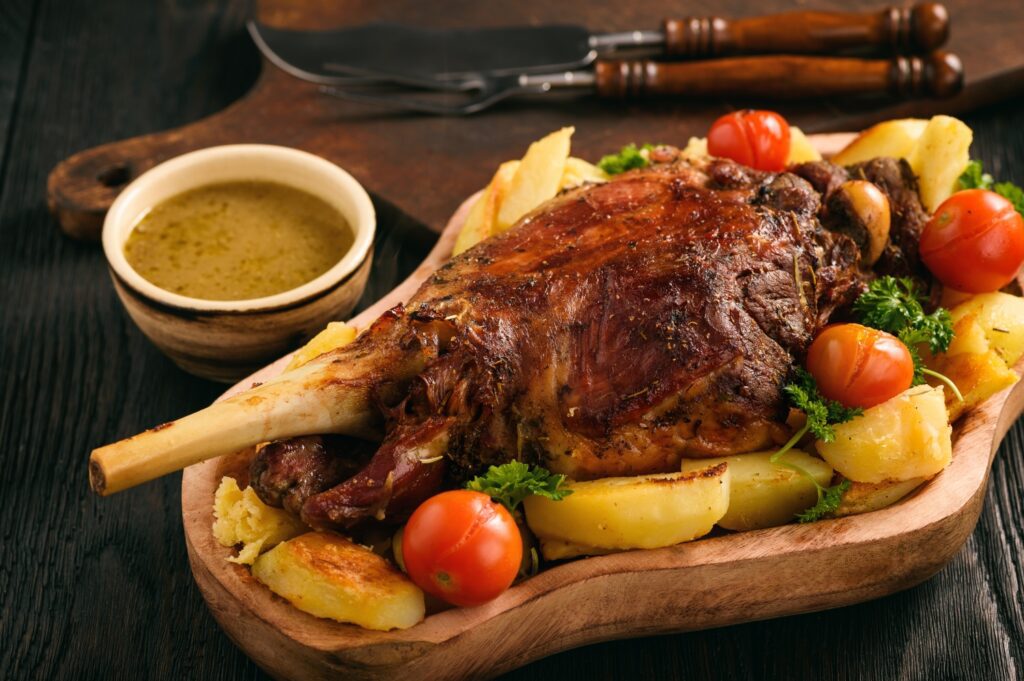
Many traditional Icelandic dishes use locally produced lamb, which has a distinct game-like flavor due to the sheep’s free-roaming diet of highland herbs, moss, lichen, and grasses. Look out for traditional dishes such as:
- Kjötsúpa – delicious lamb soup made with winter root vegetables
- Lambalæri – roast leg of lamb
- Flatkaka með hangikjöt – a flatbread served with sliced smoked lamb (a great food option for those camping in Iceland)
2. Síld (pickled herring)
Fresh fish and seafood are an Icelandic staple, but the humble herring holds a special place in the country’s history. From 1867 to 1968, the herring industry thrived, fuelling an era of rapid economic growth and prosperity. Many settlements in North Iceland, such as Akureyri, expanded to support the industry, but sadly overfishing led to the industry’s demise in the late 1960s.
Herring stocks have fortunately replenished, and pickled herring is still a well-known delicacy. You’ll typically find pickled herring served as an appetizer with potato salad or Icelandic rye bread.
Different pickling marinades are used for preserving herring, the most popular being onion, closely followed by curry and beet. If you’re visiting in December, look out for a ‘jólahlaðborð’ (Christmas buffet feast), where you’ll find síld among the starters alongside smoked salmon and seafood mousse.
3. Skyr (Icelandic yogurt)
Icelanders have been enjoying this high-protein, yogurt-like delicacy for centuries. Skyr is made from milk and has a rich, slightly sour taste. It’s low in fat and lactose and is traditionally eaten with brown sugar and topped with fresh cream and wild Icelandic blueberries. Delicious for breakfast, lunch, or dinner!
Skyr has become one of Iceland’s most famous food exports in recent years, with demand rising across the USA and Europe.
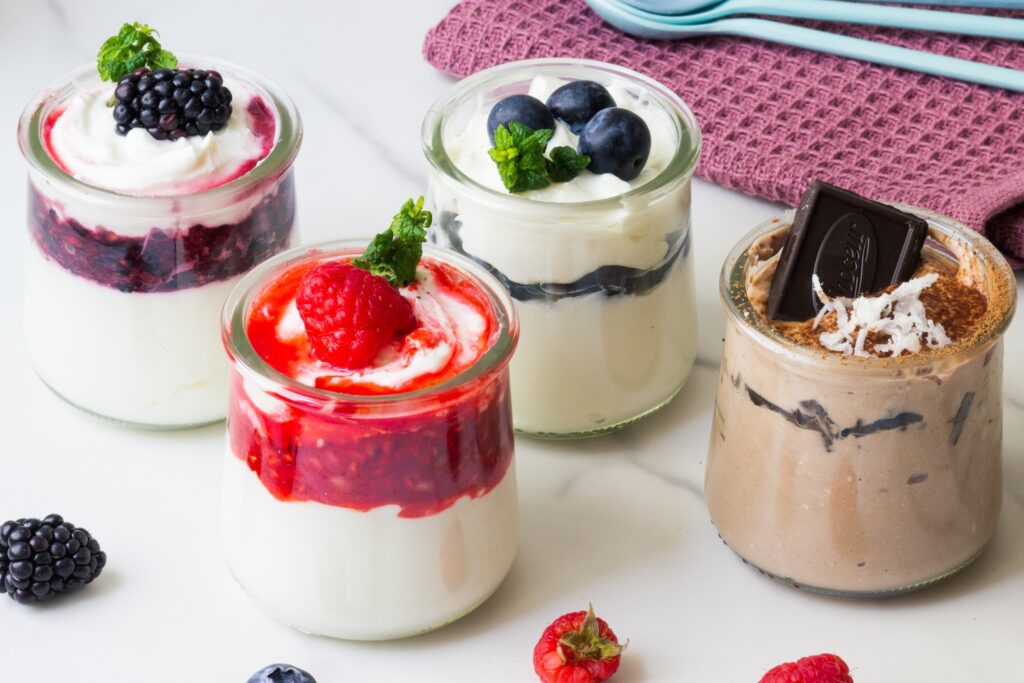
4. Harðfiskur (dried fish)
Harðfiskur is a traditional Icelandic staple and a great example of how preservation techniques remain part of Icelandic food culture. Once eaten by the poorest Icelanders, Harðfiskur is now a popular snack in most grocery stores. It’s also high in protein, vitamins, and omega-3.
Harðfiskur is produced by laying fresh fish – usually cod or haddock – on wooden drying racks for several weeks for the Icelandic breeze to dry. The finished product has a yellow hue, a tough, chewy texture, and a strong odor. It isn’t really edible until it’s pounded into a flat shape with a meat mallet – to soften the chewiness – and then slathered with plenty of cold butter!
For those visiting Iceland for hiking adventures or glacier crossings, good harðfiskur will keep you going for hours as it’s 80% protein!
5. Rúgbrauð (rye bread)
For centuries, Icelanders cooked rúgbrauð in a pot over stove embers until the introduction of the electric oven. Hverabrauð (hot-spring bread) uses the same ingredients but was traditionally steam-cooked underground in Iceland’s geothermal areas. Both cooking techniques produce bread that’s dark, dense, and mildly sweet.
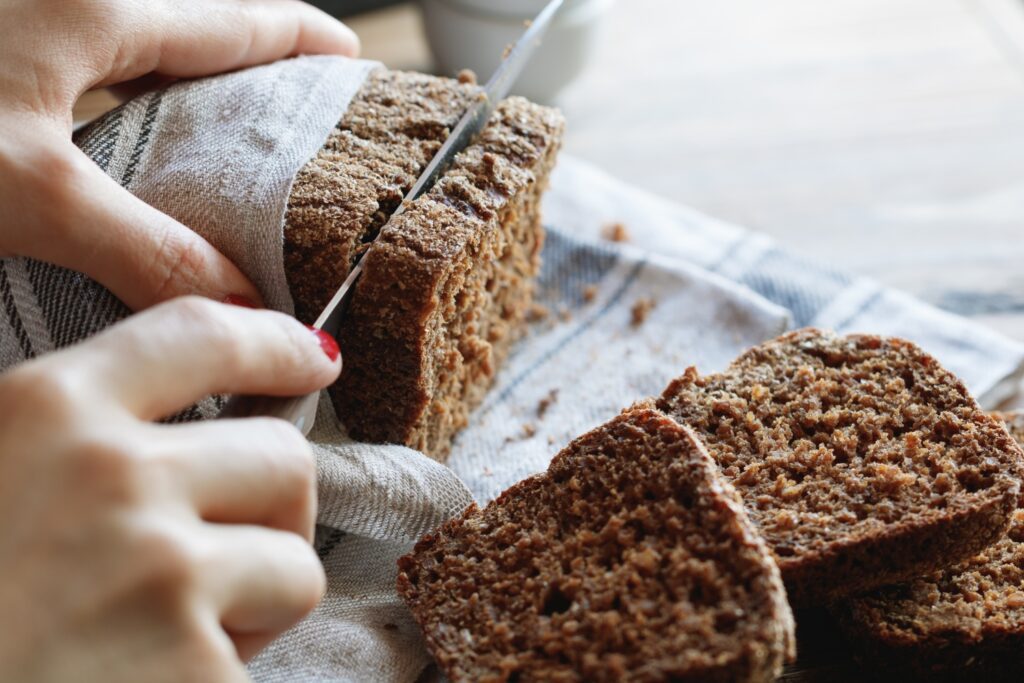
Today, this traditional rye bread continues to be an essential part of Icelandic food culture, and it makes a perfect accompaniment to smoked lamb, trout, or pickled herring. However, perhaps we should also warn you that too much Rúgbrauð causes flatulence – hence the nickname ‘þrumari’ or thunder bread!
6. Kleinur (Icelandic pastry)
If you have a sweet tooth, then kleinur is a must-try! Fluffy on the inside and crispy on the outside, these popular, twisted traditional pastries can be found in most Icelandic bakeries, cafés, and grocery stores.
Sometimes referred to as a ‘twisted doughnut,’ kleinur are actually denser and more bread-like than doughnuts, and usually, a hint of cardamon adds a distinct flavoring.
This sweet treat is the perfect companion for a coffee and the ideal pick-me-up during a long drive on your Iceland road trip!
7. Bragðarefur (ice cream)
While we’re still thinking about sweet treats, we heartily recommend sampling Bragðarefur.
This Icelandic take on ice cream translates roughly as ‘tricky fox’ (we’re not sure why)! If you think of a McFlurry, you’ll be close in terms of what to expect. The best part is deciding which three toppings to add to your bragðarefur. Usually, with a vast choice of tempting candy and fruit options, it’s a difficult selection process!
Remember… when it comes to ice cream, Icelanders go BIG, so even a small bragðarefur makes for a substantial snack.
8. Pylsa/Pulsa (the legendary Icelandic hot dog)
Hot dogs will almost certainly feature in your Iceland experience because there will be an Icelandic hot dog stand in nearly every city, town, and village you visit. Icelanders can’t get enough of this popular fast food, to which they have added a distinctive Icelandic twist. We recommend sampling at least one to discover why we think they’re (possibly) the best hot dog in the world!
So, what makes the Icelandic hot dog special? It’s a two-fold secret. First, you have the sausage – which combines Icelandic lamb with smaller portions of pork and beef. We’ve already explained that Icelandic lamb (and meat in general) is free-range, organic, and raised in a clean, unspoiled environment – and this makes for a truly flavorsome sausage.
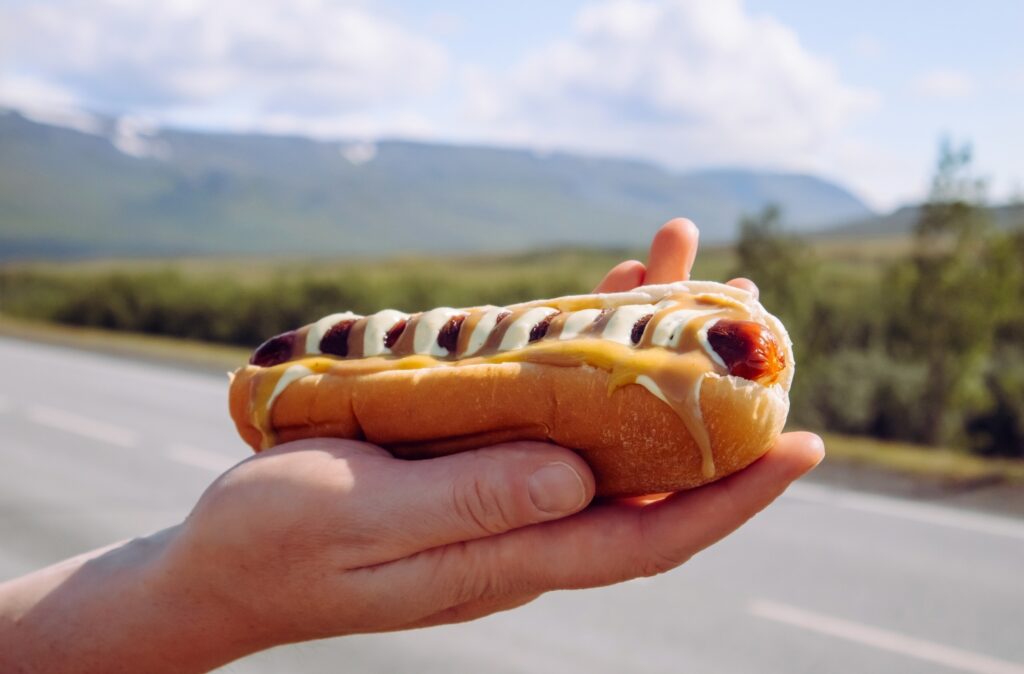
Secondly, it’s all about the serving. Icelandic hot dogs come in a warm steamed bun, topped with a combination of fried and raw onions, pylsusinnep (sweet brown mustard), remoulade (a mayo-based sauce made with capers, herbs, and mustard), and finally… a dollop of ketchup. It sounds like a lot, but we encourage you to sample ‘the full works’ as you may be pleasantly surprised.
9. Brennivín (Icelandic schnapps)
Some of the best Icelandic food experiences are washed down with a shot (or two) of Brennivín – traditionally known as an accompaniment for hákarl (fermented shark – more on that later).
Distilled from fermented potatoes/grain and flavored with caraway seeds, Brennivín was originally inspired by Danish aquavits. First produced in the 17th century, the name ‘Brennivín’ translates as ‘burned wine,’ referring to a production process that involves heating the liquid in stills over an open flame.
Brennivín is also known as ‘Black Death.’ This nickname arose in the early 20th century when, following a period of prohibition, the Icelandic government-approved label design for Brennivín was a black label featuring a skull. The design aimed to discourage the consumption of this potent spirit (37.5% alcohol). It didn’t really work – but the name stuck!
And the weird: ideas for the more adventurous foody
Now that you know what wonderful food experiences await you in Iceland, let’s venture into slightly weirder culinary territory.
Some of Iceland’s delicacies are unusual. That said, the cultural history connected with our ‘lesser loved’ delicacies is fascinating, and some are still enjoyed by many … while others demand an acquired taste!
Þorrablót is a feast of weird culinary delights. This Icelandic midwinter feast takes place in the old Norse month of Porri, which begins towards the end of January. It’s a time when Icelanders gather to toast the old gods and feast on traditional dishes.
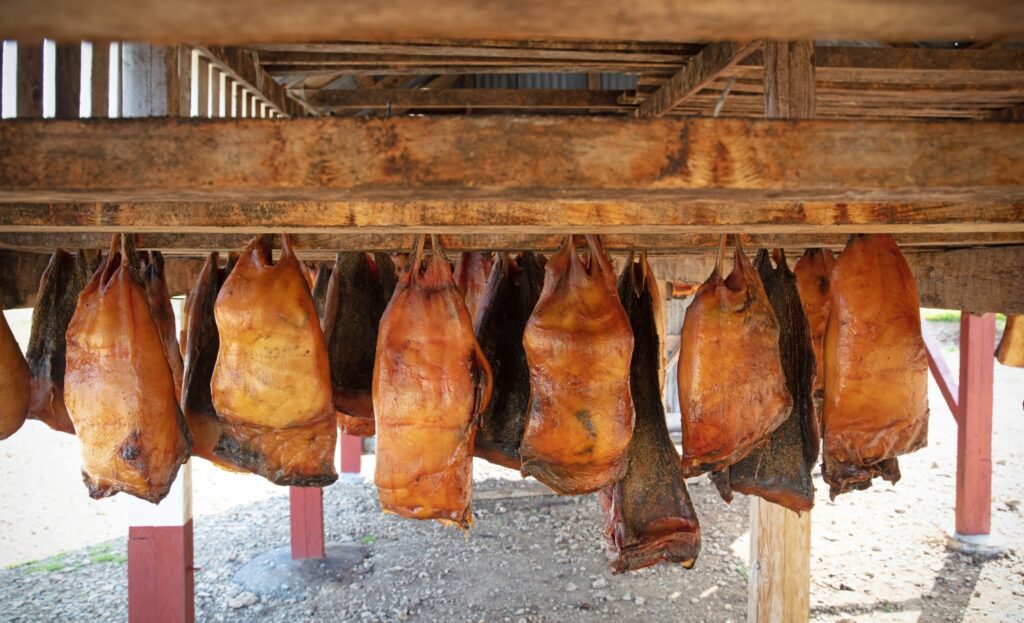
Let’s see if any Þorrablót delicacies take your fancy…
- Súrir hrútspungar – Sheep’s testicles boiled, pressed in molds, cured in lactic acid, and served in slices. Gulp!
- Hákarl: fermented shark – Greenland shark buried for 6-12 weeks to ferment, then dried for five months. Served in small bite-sized pieces, hákarl has a potent ammonia smell and fishy taste. Traditionally followed by a shot of Brennivín.
- Svið – Singed sheep’s head served complete with eyes and tongue. The head is singed, cut in half, and boiled with the brain removed. A reminder that, in the past, every part of the animal was used.
- Sviðasulta – A traditional hangover cure made from chunks of svið placed in gelatinous loaves and pickled – rather like a terrine of sheep’s head. Yum!
- Blóðmör – Made with lamb’s blood, suet, rye flour, and oats. Traditionally, a lamb’s stomach would encase the ingredients, but today, synthetic bags are often used. Similar to the British black pudding.
If you’re keen to sample the tastes of Þorrablót (well done), you’ll find many of these dishes are also available at traditional Icelandic restaurants or in grocery stores all year round. In Reykjavík, try Café Loki or Prir Frakkar for a more adventurous Icelandic cuisine experience.
Are your taste buds tickled?
Please explore the rest of our blog for more inspiration and practical tips on making the most of your Iceland trip (in between the all-important foodie opportunities that breakfast, lunch, and dinner are guaranteed to bring).
Back